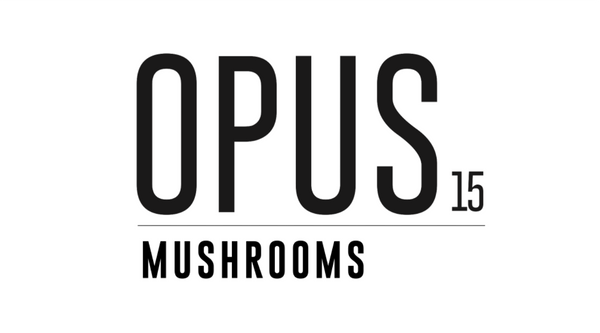The Sources
Mushrooms generally grow wild in nature. They grow on dead matter, and as a result, they often absorb the toxins into their fruiting bodies. If a mushroom grows on a tree trunk that is too close to a highway, the wood may contain the toxins from car exhaust, meaning that the mushroom growing on it also has these toxins.
So it is extremely important that the mushrooms we use in our extracts come from good homes.
That is why we are particularly selective in the field of breeding houses and/or growing areas from which we source the mushrooms.
Not every mushroom grows best in the wild. We find cultivated mushrooms the best to work with because they are the safest for consumption. A controlled space ensures that a mushroom does not ingest any toxins and will be healthy. Unfortunately, it is sometimes difficult to grow certain mushrooms.
Here we explain about our 5 mushrooms, how they are grown or picked.
Chaga
The Chaga mushroom grows in icy areas where the temperature is as low as -40”C.This makes it impossible to breed it. So it is picked wild in the northernmost points. The Chaga we import is wild picked in Siberia and Finland. This is done in Bio certified environments so they can't suck toxins out of the ground. Fortunately, areas where it freezes so hard are often not inhabited by people and there are also few highways that can poison the natural area.
Lion's Mane
The Lion's Mane is a mushroom that is cultivated. This one takes about 6 weeks. Unfortunately, it only stays good for 4 days from the moment it is picked. So it is dried on location in an oven, and only then will it be transported in powder worm.
Reishi
Reishi is a beautiful glossy mushroom that almost looks like wood. He is also called in Dutch; the pedunculate lacquer fungus. This mushroom stays good for a long time and is therefore simply transported in its entirety.
Turkey Tail
Turkey Tail, is the mushroom that is picked wild. It grows at normal autumn temperatures, not too cold, not too warm, but nice and moist, and preferably on wood with fallen leaves. It therefore does not grow on bags of granulate, sawdust, or wheat and is therefore difficult to grow in a growing cabin. There are nature reserves in which they do breed, and this is more wild breeding. In a bio-certified environment, far from highways and people, dead tree trunks are lined up. That's where the turkey tail mushrooms grow. When they are ripe they are picked. Like the lion's mane mushroom, it would not survive a long drive to the Netherlands. That is why it is dried in the oven at the ripest moment and pulverized into a powder or small pieces.
Cordyceps
The Cordyceps is called the caterpillar fungus. He doesn't necessarily owe this name to its shape, unfortunately. The Cordyceps grow on dead insects. But because Opus finds it is so important that our entire process is vegan, we source from a laboratory that knows how to grow its cordyceps on soya and rice. This is done in jam jars with holes, where the mycelium of existing cordyceps mushrooms is inoculated on the rice in the jar. This mushroom is also soft and wet, so it molds faster than the woody chaga or reishi. This means that they will also have to be dried at the ripest moment and pulverized into a powder.
Testing each batch
All the imported mushrooms will arrive at a bio-certified laboratory. Here they are checked for heavy metals, pesticides, and other toxins that non-organic mushrooms often contain with every batch (besides the fact that they come from the same culture, or natural culture, or nature reserve). And if healthy, they arrive at the lab where we turn them into a tincture. The reason we choose to sell the mushrooms in tincture is because the powder does not last that long, and is not absorbed very well in the blood and is therefore less efficient and effective. Our tinctures are based on alcohol, and are therefore quickly absorbed into the blood.
